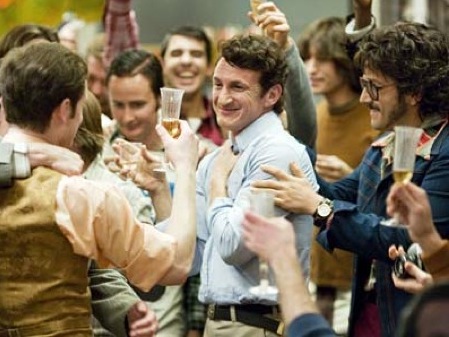
Hello? Hellllooooo? Anyone out there? Sheesh. No posting since October. That's pathetic. It's not that we haven't all seen movies, somewhere...in the theatre, at home or on the telly.
Fine, I'll just have to muster up a review. Here goes.
Up In the Air
Director: Jason Reitman
Written by: Reitman and Sheldon Turner
Starring: George Clooney as Ryan and Vera Farmiga as Alex
Released 2009
REVIEW by CINEMAGIRL:
The film opens with aerial shots, the kind of shots we've all seen from the window seat of a 737. Immediately we are placed in the fast-paced, business travel world of Ryan Bingham, played expertly by the coy George Clooney.
Ryan takes us through the ropes of his life. He is a professional firer - the person companies bring in to lay off workers without getting their own hands dirty. He is an expert in his field, and an expert at business travel - even holding public speaking engagements on the matter. He urges his audience to abandon physical and even emotional attachments, because you can climb faster with a lighter pack.
He himself is home about a month out of the year at his tiny apartment, which is void of all personality and merely a prison for the man who loves to keep running.
After the film sets the stage and introduces the main character, he is thrown two curveballs. One - his travel may be curtailed. And two - he meets a woman on the road.
Ryan starts up a relationship with Alex (Farmiga), another business traveler spending her life in hotel bars and tabulating air miles. The two hit it off, and form a casual attachment while both being emotionally unattached. At the same time he is trying to convince his boss to keep him on the road and not tie him down - notably this idea came from the new girl, fresh out of college and lacking all experience in the field.
This film may feel foreign to contemporary movie-goers because it is done in such a traditional way - snappy lines, round characters who are both great and flawed, complex situations. Clooney could have easily been played by Humphrey Bogart or Gregory Peck. Bette Davis would've made a great Alex.
A nice touch to this film is the use of the recent unemployment in this country that ties this story to modern times. Reitman even cast real people who have been recently laid off to give testimonials. It was a nice, authentic touch considering the seriousness of the matter, and the fact that our leading man, or "hero" is in the job of firing people.
Farmiga is a natural as a globetrotting businesswoman, delivering lines with ease and authority. Clooney is charming as always and well deserving of his Golden Globe nomination. The film is full of funny, chuckleworthy moments, but it is telling that it is nominated for Best Picture Drama by the Hollywood Foreign Press Association.
I recommend seeing this film soon, while the issue of lay-offs is at the forefront of national news. It would be timeless anytime, but makes a bigger impact considering reality.
STORY: 9
ACTING: 8
LOOK: 7
OVERALL: 8
Current Golden Globe Nominations for this film:
Best Picture Drama
Best Actor (Clooney)
Best Supporting Actress (both Farmiga and Anna Kendrick)
Best Screenplay
Best Director
















